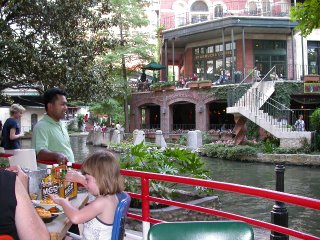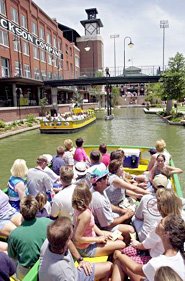Lack of Regional Planning Contributes to Area Decline
The purveyors of sprawl development are at it again in our area. It's tough to say what ugly wasteful development came first in this string of ugly wasteful developments. There is the enormous and completely unnecessary retail power center in Webster, the unabated cancerous growth of new and expanded Wal-Marts (Albion, Brockport, Canandaigua, Geneseo, Geneva, Greece, Lima, Macedon, Newark, Seneca Falls), yet another Bed Bath & Beyond here and a Walgreens there, the proposed sprawl plaza in Chili, etc. The list of bad land use development decisions in this region continues to grow as fast as the average American's waistline.
In today's paper, a short blurb noted that the Victor Town Planning Board is considering the Environmental Impact Statement for "Victor Commerce Park" - another sprawl plaza of the worst kind. The so-called Park would include a Super Wal-Mart, 100k square feet of additional retail space, and two outparcels for chain restaurants. This proposal has actually been around for a very long time and has been quite controversial. It sits on a hillside adjacent to relatively upscale houses overlooking the southern hills (and the scenic NYS Thruway). It originally included a few hundred thousand square feet of office space as well but I suppose that given the horrendous state of the local economy, the developer thought twice about trying to promote that use at this time. Yet somehow our economy can absorb another few hundred thousand square feet of retail? Where is this income growth coming from?
Sprawl retail does not create local income growth. Rather, it drains income away from this area and into the pockets of out-of-town retail conglomerates hell-bent on world domination through low prices. Just as every time a bell rings, an angel gets its wings; every time a cash register at Wal-Mart rings, a local farmer goes bankrupt trying to produce more with less and a Cambodian teenager gets whipped for working too slow. But what do we care? We're saving a dollar on a bushel of corn and two dollars on a t-shirt. The attractiveness of convenience and affordability is not lost on me. I understand that majority rules and that the majority of folks around this great nation prefer the long drive, parking lots, and mediocre disposable architecture that comprises the modern American retail experience. My question is, why do we need more of the same in this region?
If Census estimates are accurate, and they rarely are, we're losing people. That's right, Greater Rochester, the diamond in Upstate NY's rough has fallen on hard times. It's not just the fact that we're losing people, it's that we're losing those people with the most money to spend. As a twenty-something, I can attest to the fact that I am a rare breed around these parts. Most 25-34 year olds have moved on to the supposedly greener pastures of California, DC, Boston, the Carolinas, Texas, and elsewhere. Spitzer was mostly right when he said that Upstate is like Appalachia. But we aren't just LIKE Appalachia, we ARE Appalachia. I love this City and region, but for most young people, it's far too depressing here. Building more and more Wal-Marts, Bed Bath & Beyonds, and Applebees isn't going to change that. They have just as many Home Depots and Targets in Georgia as we do here.
The unneeded growth in sprawl development will not only not change things, in fact, it will only exacerbate the problem. In a region with zero population and income growth, every additional square foot of retail that is constructed on the periphery means less money spent somewhere else in this region. When that additional retail is of the big box variety, it's even worse as the profits made there are shipped out of our region, never to return. That puts all of us (cities, towns, and villages) in a more precarious position. Can we afford to further hollow out our inner city and villages? It is the type of urban, mixed-use feel found in our cities and villages that young folks are attracted to. If we continue to harm those environments, we will only further hasten our decline.
Sadly, there is no way we can ever change the way we develop regionally. We lack a comprehensive regional planning board that can affect how towns develop. Having such a Board, we could put limits on the total number of new retail space constructed in the region. We could limit the number of sprawling housing tracts built in suburban and rural areas. We could make a regional decision to redirect development into our cities and villages, thereby reinvigorating those areas that young workers are attracted to. We talk about reversing the "Brain Drain", but without real regional planning, we're just pissing in the wind.

Which do you prefer, typical suburban strip mall development (above) or vibrant urban downtown development (below)?

Why I Support the Broad Street Canal Concept
The idea has been batted around for a couple of years now. Instead of filling in the old Broad Street subway tunnel and reconstructing Broad Street on its surface, the concept goes, we should take this opportunity to re-establish the Erie Canal on this historic right-of-way. At first I thought this was a pipe dream. It would cost tens of millions to achieve. It would cause considerable traffic problems downtown. It would take enormous amounts of political will. But beyond that, why not? The more I think about it, the more I like it. Sure, there are serious questions that need to be answered; but this is a real chance for Rochester to establish itself as a city takes risks in order to ensure a brighter future for its residents. Plus, as much as I hate to admit it, light rail transit, the other alternative use for the tunnel, ain't gonna happen here (or at least not in the near future). If you're unfamiliar with the canal idea, check out the article in today's Democrat & Chronicle.
The more I think about it, the more I like it. Sure, there are serious questions that need to be answered; but this is a real chance for Rochester to establish itself as a city takes risks in order to ensure a brighter future for its residents. Plus, as much as I hate to admit it, light rail transit, the other alternative use for the tunnel, ain't gonna happen here (or at least not in the near future). If you're unfamiliar with the canal idea, check out the article in today's Democrat & Chronicle.
The best examples of this type of development in this country are San Antonio and Oklahoma City. The San Antonio RiverWalk is the signature of that city, rivaling the Alamo. This project grew out of a utilitarian solution to a flooding problem in the downtown area. A bypass channel was built in the 1940s and the surrounding land was turned into a park. City officials sensed that it could be used for economic development and made plans to develop it as an attraction. Now luxury hotels, condos, restaurants, and shops line the banks of the RiverWalk. It gave downtown San Antonio a face, a reason for locating there. San Antonio is now planning on extending it, to breathe new life into neighborhoods surrounding downtown. The same can be accomplished here.

Oklahoma City took its cue from San Antonio but with a difference - they built theirs from scratch. That's right - there is no real historical precedent for the Bricktown Canal. True, a canal was supposed to be built there over a hundred years ago, but it didn't happen, until 1999 that is. Modern day city planners there figured that if they built the canal through the middle of an abandoned warehouse district, it would probably spur investment. They took a risk and they proved that they were right. I counted some 50 shops and restaurants in Bricktown.

You could also look at Providence, Ottawa, Paris, Amsterdam, or Venice. It's the same everywhere - people are attracted to canals. Especially in urban environments. Just look at the development that has taken place in Fairport or Pittsford, then think of that on a larger scale in downtown Rochester. It can happen, if we don't shy away from it. Renaissance Square will prove our ability to pull off a major redevelopment project. We need to continue the momentum from that project and get all those players behind this. Sometimes you need to reach into your past in order to reach where you want to be in the future.
Photos taken from a number of sources not my own, please don't sue.
MacGregor's Closed for Good, Selfish Neighbors to Blame
I'm still recovering from the shock of hearing that MacGregor's has closed its original Gregory Street location for good. That bar was a landmark in the community. It was one of the best places in town to grab a beer, chow on some tasty grub, and watch a game. But that's all gone now, thanks to the selfish interests of its residential neighbors. They should be ashamed of themselves. That bar, despite the noise, attracted a relatively classy crowd which likely served to keep trouble away. I hope that building stands empty and unused, attracting crime and neglect to that section of the South Wedge. Maybe then the neighbors will realize the mistake they've made.
As a downtown resident, I'm quite used to noise. Many thousands decend on the streets below my apartment every weekend. They yell, swear, fight, honk, break bottles, and blast their stereos louder than I thought was possible. But that noise was there well before I moved in, so I feel that I have no right to complain. I knew what I was moving to and if I couldn't stand it, I could move. Why couldn't MacGregor's neighbors share my viewpoint? I'd have gladly purchased their home and dealt with the occasional noise problem. In fact, there was a lovely home on Cayuga Street just around the corner from MacGregor's that sold within days above list price so I know many folks are (or should I say were) attracted to that neighborhood because of MacGregor's, not in spite of it.
I hope that the City works with the owners of MacGregor's to find them another location in the City where they won't have to deal with asshole neighbors. As it conflicts with my values, I will not be visiting them in their sterile non-descript suburban locations. Sadly, I will treat them as I have Rohrbach's, which I haven't been to since they moved from Gregory Street to Ogden/Gates many years ago. I'm still holding out hope that Rohrbach's opens a City location, so folks like me can get reacquainted with their fantastic beers. But that sounds like a topic for another day. Allow me to close by posing an easily answered question. What is a city without life? For me, it's a city that I don't want to be a part of.




